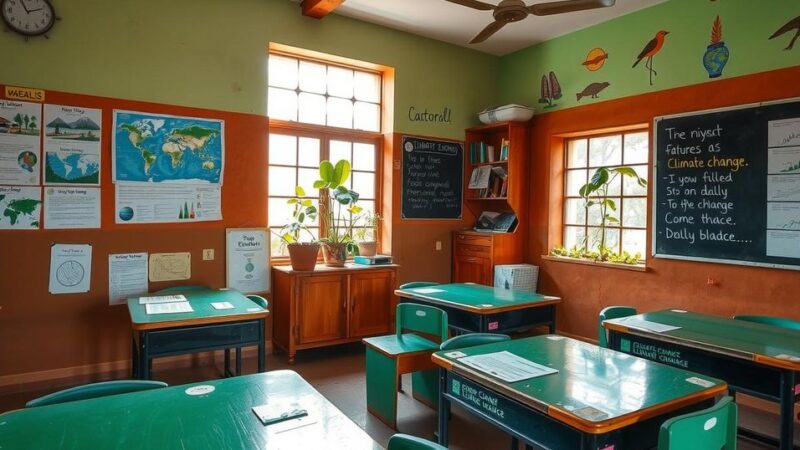Australia has issued “Do Not Travel” warnings for ten countries due to significant safety risks, including armed conflict, terrorism, and civil unrest. This move effectively halts tourism in these regions, stopping international flights, invalidating insurance, and stalling economic recovery efforts tied to tourism. The situation underscores how geopolitics reshape global travel dynamics, leaving travelers and local economies exposed to ongoing instability.
Australia has established “Do Not Travel” warnings for ten nations: Russia, North Korea, Venezuela, Haiti, Iran, Myanmar, Sudan, Syria, Ukraine, and Libya. This decision arises from escalating threats such as armed conflict, terrorism, civil unrest, and arbitrary detention. Consequently, it effectively halts any remaining tourism activity, suspending international flights and tours, and undermining economic recovery linked to foreign visitors. The global tourism sector will experience considerable repercussions as geopolitical crises reshape travel dynamics.
The Australian Government’s warnings, listed by the Department of Foreign Affairs and Trade (DFAT) on Smartraveller, highlight severe safety risks in these countries. These advisories signal alarm for travelers and present daunting setbacks for tourism recovery aspirations in the affected regions. The implications of these warnings extend beyond individual safety to broader economic concerns for local communities relying on tourism.
In Russia, Australians are advised to leave immediately, facing significant risks such as arbitrary detention and threats from terrorism. The country’s military presence and hostility towards foreigners have led to a collapse in tourism, making travel increasingly perilous.
North Korea remains isolated, with its borders closed indefinitely. All forms of tourism are suspended, reflecting a state-controlled environment that has rendered foreign travel practically nonexistent. The current restrictions indicate a significant departure from any semblance of the previous limited tourism.
Venezuela continues to suffer from rampant violence, extreme shortages of essential goods, and risks of arbitrary arrest. Despite its historical ties to tourism, safety concerns render travel unfeasible, and the nation’s infrastructure is unable to support visitors.
Haiti is under a State of Emergency due to escalating gang violence that has closed borders and suspended major airline flights, leaving tourism entirely frozen. Safety risks associated with violent crime, particularly kidnapping, have prompted urgent evacuation measures.
In Iran, ongoing tensions and security deteriorations make it too hazardous for travel. Australians face high risks of detention amidst threats posed by military actions and protests, dissuading any potential tourism ventures.
Myanmar remains unstable following the military coup, with a notable drop in tourism and a volatile safety situation. Travel to this region is ill-advised due to the significant unrest.
The violence in Sudan has intensified, prompting immediate departure recommendations for Australians. Limited commercial travel options exist, but they come with substantial risks as tourism has ceased to exist amid persistent civil conflict.
Syria is recognized as one of the world’s most dangerous travel destinations, with ongoing military conflicts and terrorist activities contributing to high civilian casualties. Efforts to visit Syria are strongly discouraged, given the destroyed or restricted tourism infrastructure.
Ukraine’s ongoing war has resulted in widespread danger characterized by heavy fighting and a high frequency of missile attacks. The country remains highly unpredictable, with tourism virtually halted due to severe risks of injury or death.
Libya faces terrorism and civil unrest, with Australians urged to evacuate where safely possible. Despite its rich historical significance, tourism is entirely suspended as security remains tenuous.
The Australian Government’s “Do Not Travel” advisories represent a broader global trend wherein geopolitical instability is increasingly dictating international tourism dynamics. This state of affairs leaves both travelers and local communities in a precarious situation, limiting the prospects of a safe return to tourism in these affected regions. Concurrently, insurance providers typically void coverage in these destinations, complicating potential travel even further.
In conclusion, Australia’s issuance of “Do Not Travel” warnings for ten high-risk countries reflects the fragility of global tourism amid geopolitical unrest. The posing safety concerns not only halt tourism activities and international flights but also stifle economic recovery for regions reliant on foreign visitors. As long as these crises persist, both travelers and local communities will remain in a state of uncertainty, highlighting the ongoing challenges faced by the global tourism sector.
Original Source: www.travelandtourworld.com






